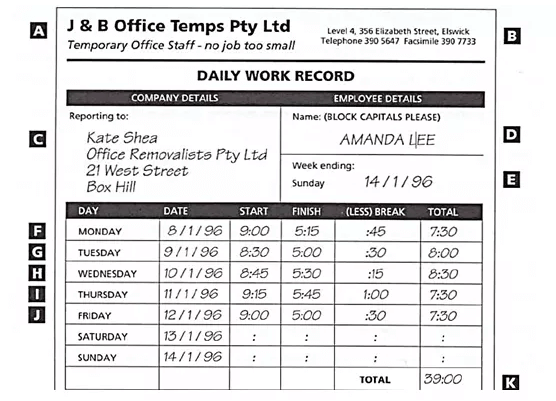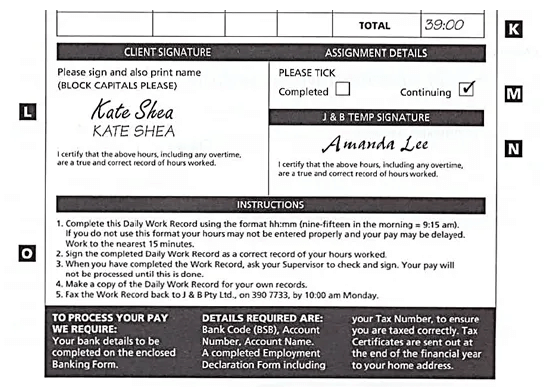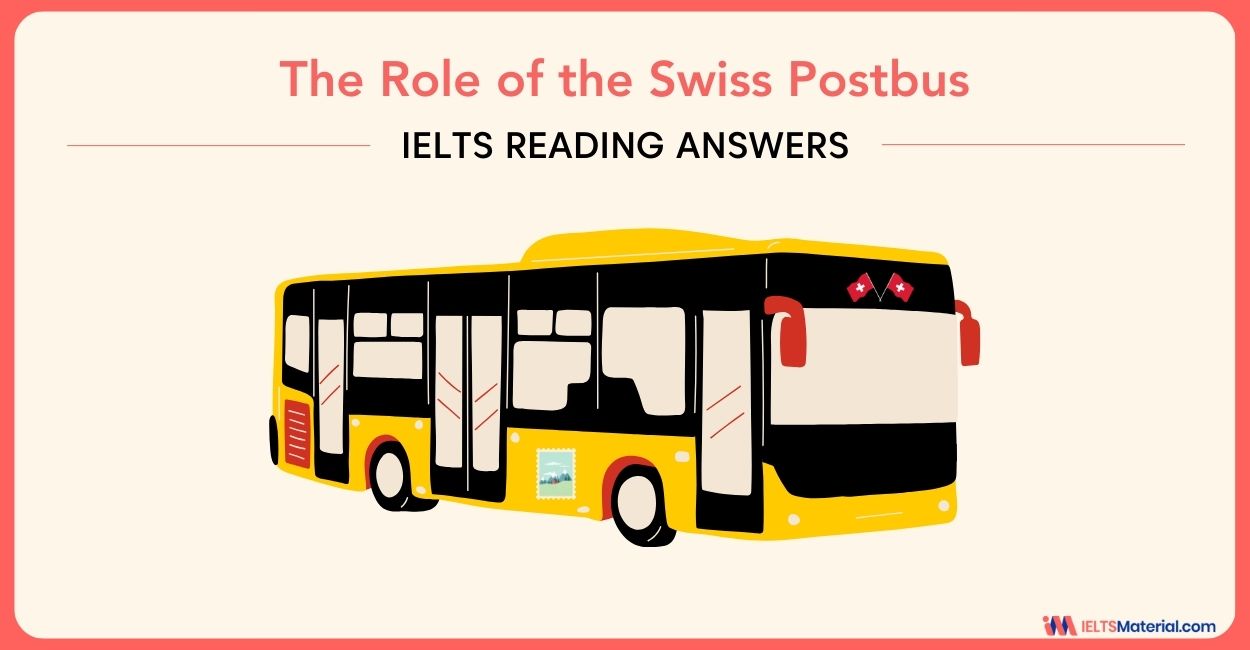Numeracy Centre and Great Inventions | IELTS General Reading Practice Test 7 with Answers
10 min read
Updated On
-
Copy link
With the Numeracy Centre and Great Inventions IELTS General Reading Practice Test 7, explore the types of questions and get a band score in real life.
Table of Contents

Limited-Time Offer : Access a FREE 10-Day IELTS Study Plan!
The IELTS General Training Reading will give you 60 minutes to complete 3 sections where the question subject will be everyday/ general topics. In the IETS exam, you are only given 60 minutes to attempt the reading test. You can practice more by exploring the IELTS General Reading Practice Tests and aim to achieve a higher band score.
Section 1
You should spend about 20 minutes on Questions 1-13, which are based on Reading Passage 1 below.
Read the information below and answer Question 1-7
Questions 1-13
There are 6 office messages A- F on the next page.
Answer Questions 1 -3 by writing the appropriate letter A-F in boxes 1 -3 on your answer sheet.
1 Which message changes the time and place of a meeting?
2 Which message is probably personal?
3 Which message is from a company which is trying to sell something?
A Please call Nancy.
She will be at 818 7546 if you miss her at home
B INTEROFFICE MEMO
Meeting in the boardroom on Friday, July 10 at 10 am has been changed to Monday, July 13.
Same time, same place.
Please bring the notes of the previous meeting.
C You are invited to a demonstration of our new audio-visual office products at 10 Barry Avenue Queenstown, 5 pm, July 28.
RSVP. Refreshments will be served
D MEMO TO: C. Gates
Please confirm your flights with Qantas. We have you booked to depart August 21 at 10 am and to return a week later, arriving August 28 at 7 pm. The company will pay all expenses of this trip.
E Please note:
(Not)10.30 12.30
July 27
Webster’s Trading Company meeting,
(Not) 30 Barrow Street.
12 Jones Road
F MEMO TO: C. Gates
Check amendments to the Ling Kee contract. Do we really want to offer 10%?
Please see me this morning at 10 in my office.
Questions 4 -13
Read the Daily Work Record form below. It records a week’s work by Amanda Lee, a temporary typist, who has been sent on a job by her employer, J & B Office Temps Pty Ltd. Some sections of the Daily Work Record form are marked with the letters A – O.


Questions 4 -7
Using the information in the daily work record form and the instructions, answer the questions below by writing the letter of the appropriate section A to O in boxes 4 -7 on your answer sheet.
4 Which section has the address of the company to which Amanda has been sent?
5 Which daily time record shows the longest working day?
6 Which daily time record shows the longest break?
7 In which section did Amanda indicate whether the job is still going on?
Questions 8-12
Using NO MORE THAN THREE WORDS, answer tile following questions. Write your answers in boxes 8-12 011 your answer sheet.
8 What format must be used to record the hours worked?
9 What should employees copy for their own records?
10 Who must check and sign the work record before payment will be processed?
11 What day must the work record be received?
12 What must be written on the Employment Declaration form?
Question 13
13 Tax certificates are sent to______________ .
Boost your IELTS General Reading score with the IELTS General Reading Tips!
Section 2
Read the information about the Numeracy Centre below, and answer Questions 15-27.
Numeracy Centre
Many business and marketing courses require knowledge of introductory statistics, computing or mathematics. If you feel inadequately prepared for your course, you can get help from the Numeracy Centre, which offers FREE elementary help in maths and statistics. Grab a timetable from the Centre and drop in when it suits you.
COURSE A
The first course available to students is a Revision Course in Basic Maths. This 3-hour lecture will review mathematical concepts necessary for elementary statistics, such as fractions, area and percentages up to a Year 8 level of mathematics. It is not necessary to book, so feel free to drop in. This session is FREE!
COURSE B
For those students doing marketing courses, and other courses requiring statistical analysis, there is the Bridging Course in Statistics for Marketing. This three-day course introduces ideas in elementary statistics to provide a starting point for further developments in statistical skills later on in other courses. The course is run in sessions of three hours, in the form of a one-hour lecture followed by a two-hour tutorial. Examples will be drawn from the reference books listed. The tutorials will be interactive where possible (eg. drawing random samples from the population of numbered cards in class) with hands-on experience of data manipulation using MINITAB on a bank of PCs.
COURSE C
Statistics for the Practitioner is slightly different from the previous course, which must be completed before this course. This course is largely non-mathematical.
It will instead concentrate on the interpretation and application of statistics rather than on computation. The statistical package MTNITAB will be used as a teaching tool. This course will be conducted over two days in the form of workshops and small group discussions, with a strong emphasis on hands-on experience of data manipulation using computers.
COURSE D
A further course of interest to many students is English for Computer Studies. Students with English as their second language who will be needing elementary computing for their courses are encouraged to enrol in this 8-hour course. Students will learn through workshops giving hands-on experience. The cost of the course is $15 which includes notes and refreshments.
Questions 15 – 22
Below is a chart summarising information about the Numeracy Centre courses. Complete the required details using information from the passage. Write your answers in boxes 15-22 on your answer sheet.
| Course | Cost | No of hours/days | Previous studies required | Teaching Method |
| A | 15___ | 3 hours | None | 16___ |
| B | 17___ hours | None | lecture and 18_____ | |
| C | 2 days | 19___ | 20_____
and small groups |
|
| D | 21___ | 8 hours | None | 22__ |
Questions 23 – 27
Courses A to D is each aimed at helping a specific group of students. Below is a list of different students. Match the students to the course that would help them most. In boxes 23-27 on your answer sheet write the letter A, B, C or D for the number of the course, or N if there is no course available for the student’s needs.
23 Narelle, from Taiwan, has to use a computer to do assignments in her business studies classes.
24 Joe, who left high school 10 years ago, wants to brush up on his maths before he starts his studies for the year.
25 Jenny needs an advanced course on computer graphics for her studies in Graphic Design.
26 Geoff, who has to read many articles containing statistics, needs to know how to interpret and apply the facts and figures.
27 Bob needs to know how to perform some of the basic statistical equations for the assignments in his business course.
Section 3
Great Inventions
There are some things we use every day. Can you imagine a world without zippers to fasten clothing? Have you ever wondered about the layout of the keyboard of a typewriter, which we see every day on the computer? These are just two of the many inventions which have made our lives easier. Maybe that’s why we don’t think about them very much!
The Zipper
Whatever did we do before the invention of the zipper?
In 1893 the world’s first zipper was produced in Chicago. Although the inventor claimed that it was a reliable fastening for clothing, this was not the case. The Chicago zipper sprang open without warning or jammed shut, and it swiftly lost popularity. Twenty years later a Swedish-born engineer called Sundback solved the problem. He attached tiny cups to the backs of the interlocking teeth, and this meant that the teeth could be enmeshed more firmly and reliably.
At first, zippers were made of metal. They were heavy, and if they got stuck it was difficult to free them. Then came nylon zippers which were lighter and easier to use, and had smaller teeth. The fashion industry liked the new zippers far better because they did not distort the line of the garment or weigh downlight fabrics. They were also easier for the machinists to fit into the garment.
Meanwhile, a new fastening agent made its appearance at the end of the twentieth century: velcro. Velcro is another product made from nylon. Nylon is a very tough synthetic fibre first developed in the 1930s, and bearing a name to remind the hearer of the two places where it was developed: NY for New York and LON for London. Velcro is made with very small nylon hooks on one side of the fastening which catch tiny looped whiskers on the other side of the fastening. It is strong and durable.
Velcro is used on clothing, luggage and footwear. It is quick and easy to fasten and unfasten and has taken a large part of the zipper’s share of the market. It is also used in ways a zipper cannot be used – for instance as an easily changed fastening on plaster casts, and to hold furnishing fabrics in position.
The Typewriter and the Keyboard
The keyboard of the modern typewriter is laid out in the oddest fashion. Why would anyone place the letters on the left side of the top row of the keyboard in the order QWERTY? The answer is simple: to slow the typist down. But first, let’s consider the history of the typewriter itself.
In the 1860s a newspaper editor called Christopher Sholes lived in Milwaukee, USA. Sholes invented the first of the modern typewriters, although there had been patents for typewriter-like machines as early as 1714 when Queen Anne of England granted a patent to a man called Henry Mill for a machine which would make marks on paper “so neat and exact as not to be distinguished from print“. In 1829, across the Atlantic in Detroit USA, William Austin Burt took out a patent on the typewriter-like machine, four years before the French inventor Xavier Projean produced his machine designed to record words at a speed comparable to someone writing with a pen.
So the typewriter was not a new idea, although there had not been a successful realisation of the idea before Christopher Sholes’ machine. His typewriter became very popular, and soon people learned to type very quickly – so quickly, in fact, that the keys became tangled. On manual typewriters, the characters were set on the end of bars which rose to strike the paper when the key was pressed. In the first models, the keys were set alphabetically. When a quick typist tapped out a word like federal, it was very likely the adjacent e and d keys would become entangled.
Sholes, therefore, set about finding ways to slow the typist down. He looked for the letters which were most often used in English and then placed them far away from each other. For instance, q and u, which are almost always used together in English, are separated by five intervening letters. The plan worked, and the typist was slowed down a little.
When computers came into use in the latter part of the twentieth century it was suggested that the keyboard should be rationalised. After all, there was no longer any need to avoid clashing manual typewriter keys. One new board included keys which produced letters which frequently occur together in English, like ing and th and ed, so the word thing would take two strokes to write instead of five. Although this made perfect sense, people found it very hard to learn to use a new keyboard, and the idea was dropped. It is unlikely that the keyboard will ever be changed: as we approach the twenty-first century the voice-activated computer, already in an advanced state of development, is becoming more and more accessible. It is very likely that we will soon have machines which take dictation as we speak to them, and the keyboard will be used for corrections.
Questions 28 – 33
From the information in the reading passage, classify the following events as occurring:
A– before the nineteenth century
B – during the nineteenth century
C – in the first half of the twentieth century
OR D – at the end of the twentieth century
28 Sundback’s zipper
29 the development of nylon
30 the development of velcro
31 the development of the first typewriter-like machine
32 the first appearance of Sholes’ typewriter
33 the development of the voice-activated computer
Questions 34 – 38
Read the passage about Great Inventions and look at the statements below. In boxes 38 – 42 on your answer sheet write
TRUE if the statement is true
FALSE if the statement is not true
NOT GIVEN if the information is not given in the passage
34 The first zipper was successful as a fastener.
35 Nylon was used a lot during the Second World War, 1939-1945.
36 Nylon is named after NY for New York and LON for London
37 The first typewriter’s keyboard was different from the modern keyboard.
38 The keys of Sholes’ first machine were likely to jam.
39 New computers will use the rationalised keyboard.
40 The voice-activated computer is found rarely in recent days.
Answer Key
Unlock Answers
SECTION 1
| 1 | E |
| 2 | A |
| 3 | C |
| 4 | C |
| 5 | H |
| 6 | I |
| 7 | M |
| 8 | Hh: mm |
| 9 | (Daily) Work Record |
| 10 | (your/ the) supervisor |
| 11 | Monday |
| 12 | (your) Tax Number |
| 13 | your / the employee’s home address |
Section 2
| 15 | free |
| 16 | lecture |
| 17 | 9 |
| 18 | tutorial |
| 19 | Course B / Statistics for Marketing |
| 20 | workshops |
| 21 | $15 |
| 22 | workshops |
| 23 | D |
| 24 | A |
| 25 | N |
| 26 | C |
| 27 | B |
Section 3
| 28 | C |
| 29 | C |
| 30 | D |
| 31 | A |
| 32 | B |
| 33 | D |
| 34 | F |
| 35 | NG |
| 36 | T |
| 37 | T |
| 38 | T |
| 39 | F |
| 40 | F |

Start Preparing for IELTS: Get Your 10-Day Study Plan Today!
Recent Articles

Kasturika Samanta

Kasturika Samanta


Kasturika Samanta




Post your Comments